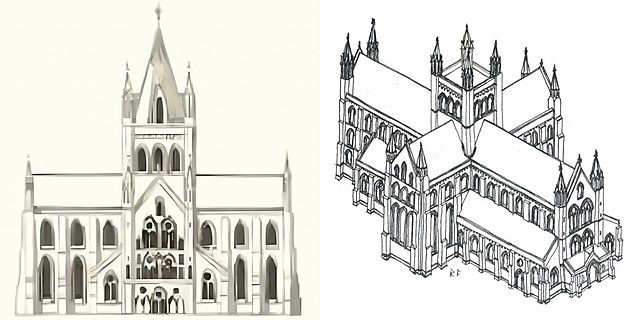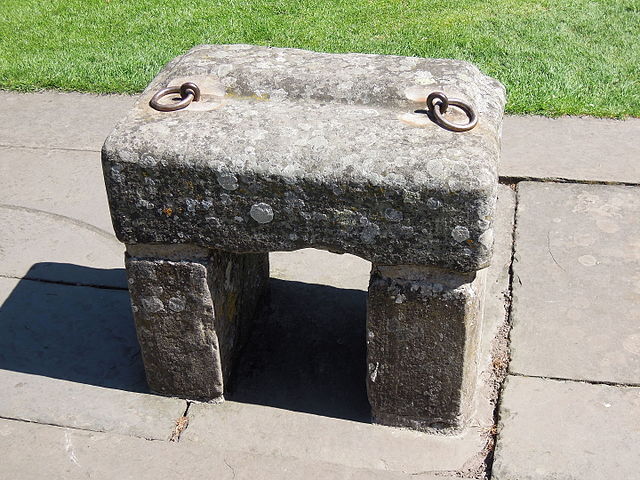Scone Abbey was a house of Augustinian canons located in Scone, Perthshire (Gowrie), Scotland. Dates given for the establishment of Scone Priory have ranged from 1114 A.D. to 1122 A.D. However, historians have long believed that Scone was before that time the center of the early medieval Christian cult of the Culdees. Very little is known about the Culdees but it is thought that they may have been worshiping at Scone from as early as 700 A.D. Archaeological surveys taken in 2007 suggest that Scone was a site of real significance even prior to 841 A.D., when Kenneth MacAlpin brought the Stone of Destiny, Scotland's most prized relic and coronation stone, to Scone.
Reconstructions of Scone Abbey
Modern replica of the Stone of Scone near the site of the Abbey
Seal of Scone Abbey
Scone is a town in Perth and Kinross, Scotland. The medieval town of Scone, which grew up around the monastery and royal residence, was abandoned in the early 19th century when the residents were removed and a new palace was built on the site by the Earl of Mansfield. Hence the modern village of Scone, and the medieval village of Old Scone, can often be distinguished.
Scone Palace
Seal of Scone Abbey, depicting the inauguration of King Alexander III of Scotland
Scone was the ancient capital of Scotland and the coronation site of Scotland's kings, or the Kings of Scots. This MS illustration depicts the coronation of King Alexander III of Scotland on Moot Hill, Scone. He is being greeted by the ollamh rígh, the royal poet, who is addressing him with the proclamation "Benach De Re Albanne" (= Beannachd Dé Rígh Alban, "God Bless the King of Scotland"); the poet goes on to recite Alexander's genealogy.
The Stone of Scone in the Coronation Chair at Westminster Abbey, 1855






